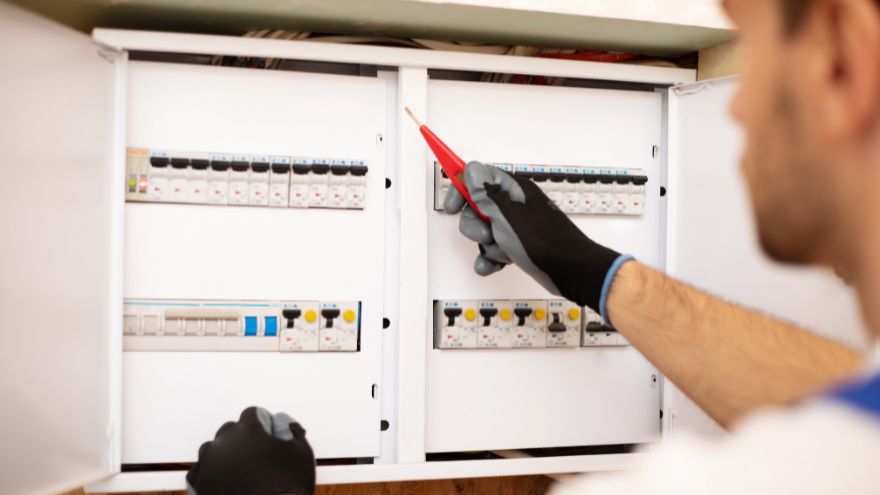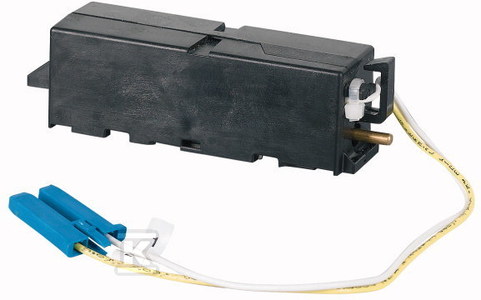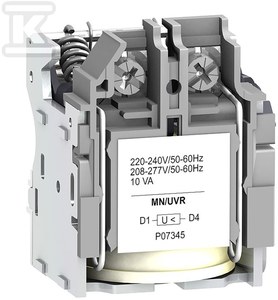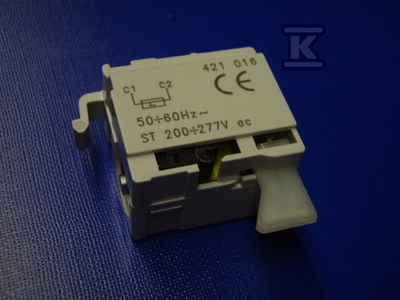Voltage releases are important elements of electrical installations. Thanks to them, it is possible to ensure the safety of users by protecting against overload and short circuit. But how do these types of devices work? When is the use of one of them particularly advisable? What types of voltage releases are available on the market? What is worth knowing about connecting them? We discuss these issues in a new article.

Check the growth triggers at the Onninen wholesaler
How does a growth trigger work?
The voltage release operates on the principle of monitoring the voltage in the electrical circuit. The most important parameter is the rated voltage. It determines the voltage level at which the release is to respond. This is fed to the trigger coil, allowing the voltage in the circuit to be monitored.
 When the voltage in the circuit exceeds this value, the trigger is activated. Shunt releases are most often used in electrical installations. Their operation is based on the response to an increase in voltage above a certain level. As a result, they provide effective protection against circuit overload and any resulting damage.
When the voltage in the circuit exceeds this value, the trigger is activated. Shunt releases are most often used in electrical installations. Their operation is based on the response to an increase in voltage above a certain level. As a result, they provide effective protection against circuit overload and any resulting damage.
Some shunt releases are also equipped with a residual current self-test. It allows you to monitor the condition and operating parameters of the electrical installation.
What types of voltage releases are there?
The division of voltage releases is not based on any standard. It is unofficial and takes into account the operating characteristics of individual models. This makes it easier to select a device tailored to the specificity of a given installation and the tasks it is to perform in its structure. According to this division, there are shunt releases, which are activated when an increase in voltage is detected, and undervoltage releases, which respond to a power outage.
How to connect a shunt release to the installation?
 Connecting the shunt release to the electrical installation is a relatively simple process, but requires care and compliance with certain rules. The installation of a shunt release is usually carried out next to an ACB or other protective device. Its task is to disconnect the power supply to this device. In the case of larger devices, the trigger may be installed inside - this is the case, for example, in power switches.
Connecting the shunt release to the electrical installation is a relatively simple process, but requires care and compliance with certain rules. The installation of a shunt release is usually carried out next to an ACB or other protective device. Its task is to disconnect the power supply to this device. In the case of larger devices, the trigger may be installed inside - this is the case, for example, in power switches.
The number of break contacts and the number of main contacts in the release may vary depending on the manufacturer and model (specifically, its purpose). Often, the trigger is combined with a mechanical button that allows manual control of its operation. This solution is used primarily to protect the installation against fire.
Growth triggers at the Onninen wholesaler
As the shunt trigger plays an important role from the point of view of the operational safety of the electrical installation, the selection of the appropriate model should be preceded by a careful analysis of its specificity. The quality of a given model is also important, which translates into its reliability. Therefore, when compiling the assortment available at Onninen, we attach great importance to ensuring that it includes only products from proven suppliers.
 At the Onninen electrical wholesaler you will find the EATON IZMX16/40 shunt release 230 VAC/DC (rated control voltage Us for AC 50 Hz from 208 to 240 V), the Schneider Electric Compact NSX shunt release 220-240VAC (from 220 to 240 V) or the Voltage release Legrand DPX3 200-277V AC/DC (from 200 to 277 V). If you have any doubts as to which model will work best in a given application, please contact us and seek help from our specialists.
At the Onninen electrical wholesaler you will find the EATON IZMX16/40 shunt release 230 VAC/DC (rated control voltage Us for AC 50 Hz from 208 to 240 V), the Schneider Electric Compact NSX shunt release 220-240VAC (from 220 to 240 V) or the Voltage release Legrand DPX3 200-277V AC/DC (from 200 to 277 V). If you have any doubts as to which model will work best in a given application, please contact us and seek help from our specialists.
Voltage releases are important elements of electrical installations, largely influencing the ease of monitoring and controlling the voltage in electrical installations and the protection of its individual components. They react to voltage increases above a certain limit, thus providing effective protection against overload. The variety of types and models allows them to be adapted to the specific needs and requirements of each installation.